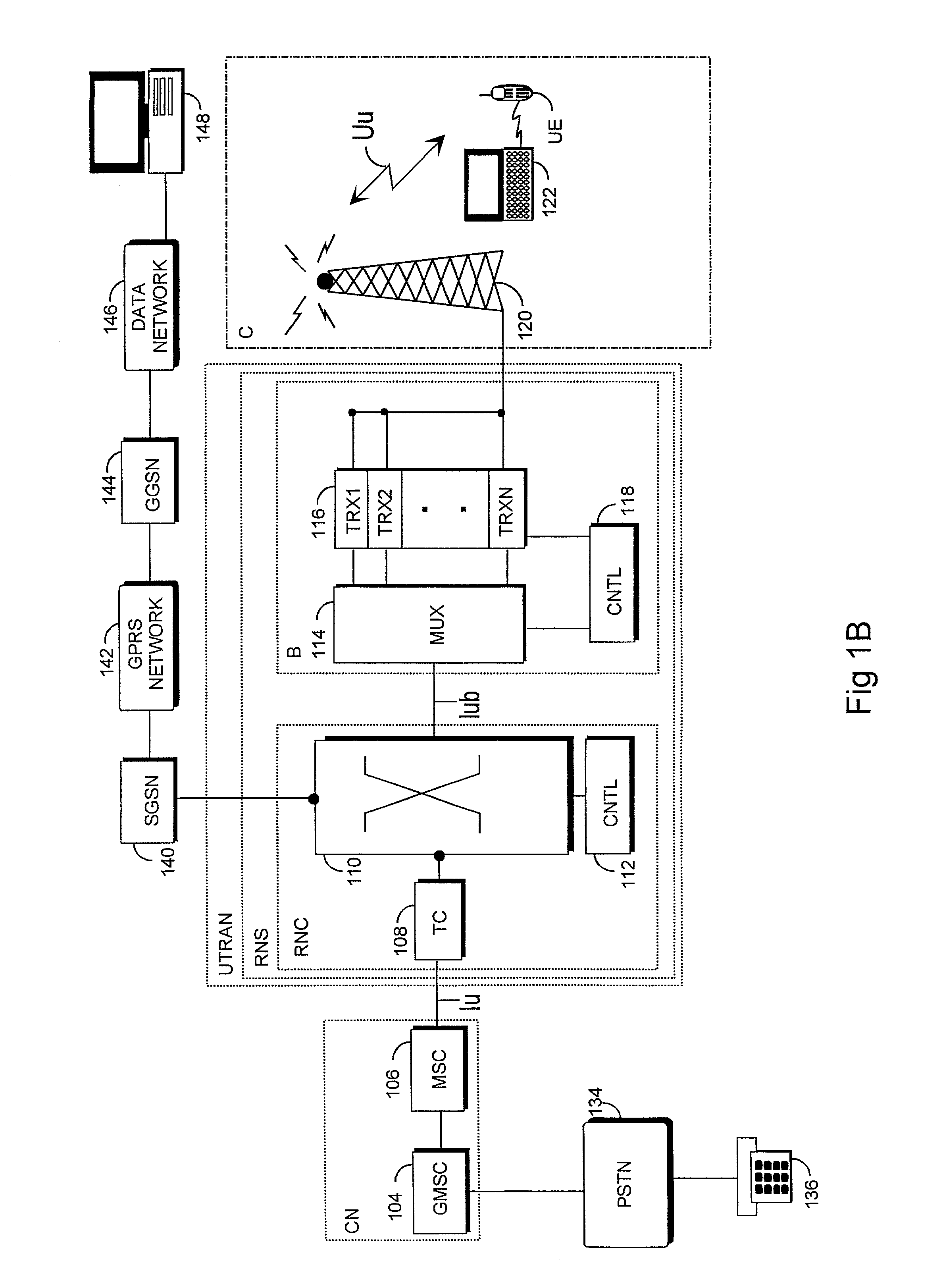Method of transmitting data from a transmitter to a receiver, and a radio system
a radio system and receiver technology, applied in the direction of transmission monitoring, electromagnetic wave modulation, polarisation/directional diversity, etc., can solve the problems of deteriorating the performance of the receiver and thus the capacity of the system, significant delays in decoding, and channel coding is not sufficient on its own on fading channels, so as to improve the cancellation of interference, improve the transmission capacity of the radio system, and reduce the effect of interferen
- Summary
- Abstract
- Description
- Claims
- Application Information
AI Technical Summary
Benefits of technology
Problems solved by technology
Method used
Image
Examples
Embodiment Construction
[0023]The examples describe the use of the invention in a universal mobile telecommunications system, UMTS, using a wideband code division multiple access method, without limiting the invention to this, however. The presented solution can also be applied to TDMA (Time Division Multiple Access) systems, such as the GSM (Global System For Mobile Communication) system.
[0024]With reference to FIGS. 1A and 1B, the structure of a universal telecommunications system is described. FIG. 1B only contains the blocks essential for the clarification of the invention, but it is obvious to a person skilled in the art that a conventional mobile communications system also contains other functions and structures, the detailed explanation of which is not necessary herein. The main parts of the mobile communications system are a core network CN, a UMTS terrestrial radio access network UTRAN, and user equipment UE. The interface between the CN and the UTRA is called lu, and the air interface between the...
PUM
 Login to View More
Login to View More Abstract
Description
Claims
Application Information
 Login to View More
Login to View More - R&D
- Intellectual Property
- Life Sciences
- Materials
- Tech Scout
- Unparalleled Data Quality
- Higher Quality Content
- 60% Fewer Hallucinations
Browse by: Latest US Patents, China's latest patents, Technical Efficacy Thesaurus, Application Domain, Technology Topic, Popular Technical Reports.
© 2025 PatSnap. All rights reserved.Legal|Privacy policy|Modern Slavery Act Transparency Statement|Sitemap|About US| Contact US: help@patsnap.com



